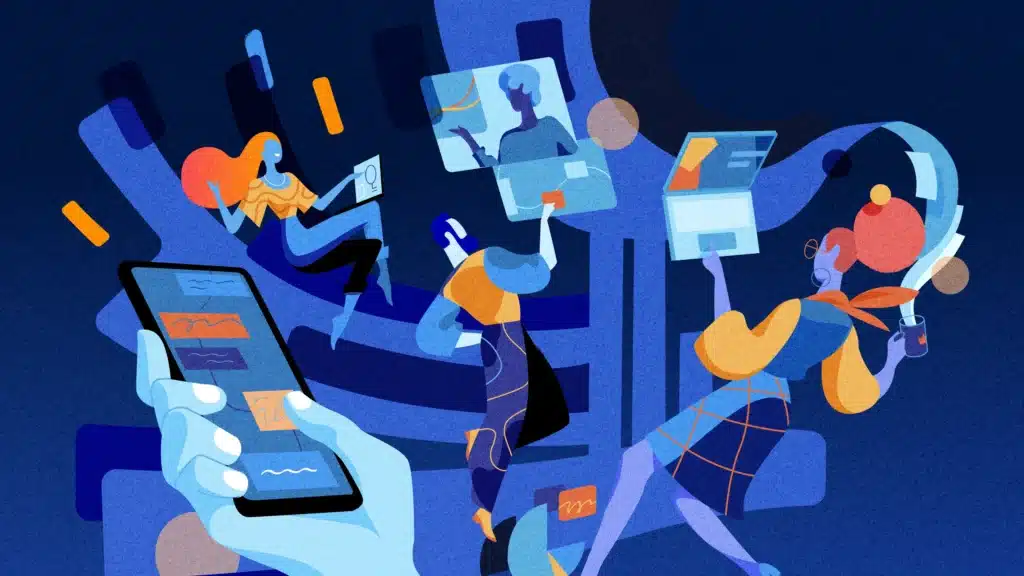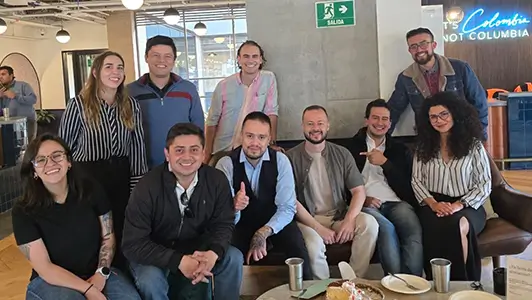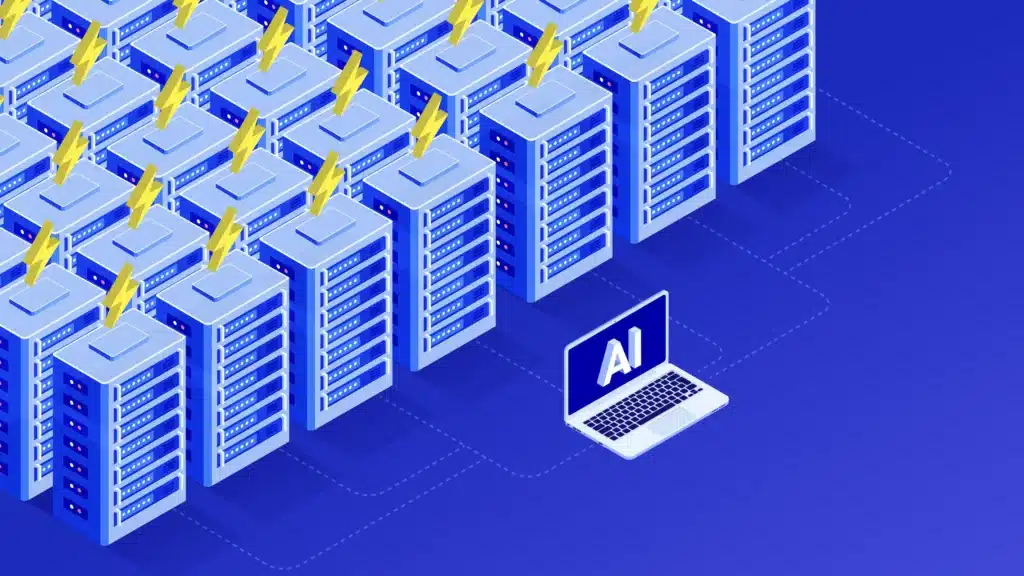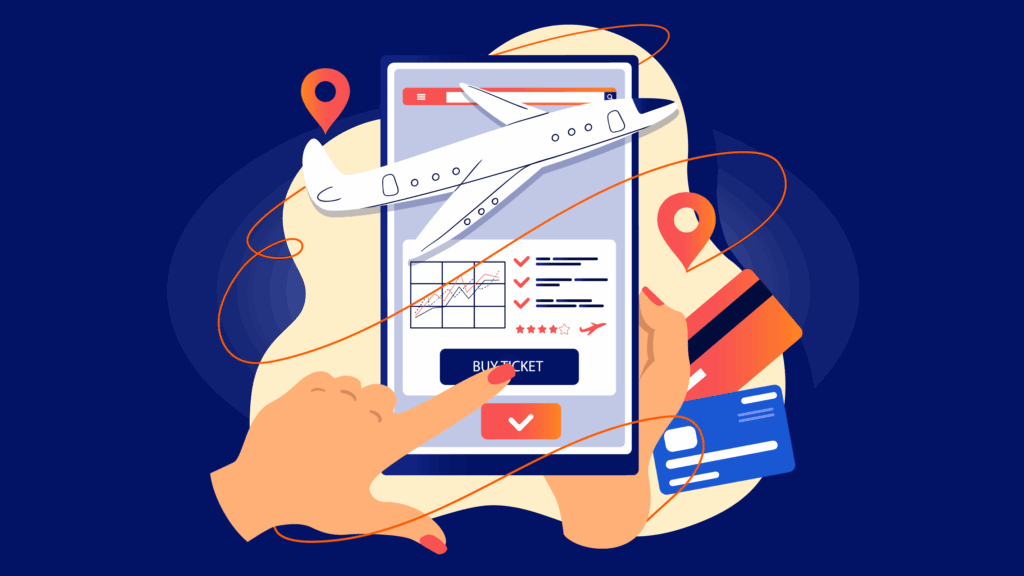Businesses are accelerating their digital transformation journey to remain competitive, but they are struggling. In an article written by CNBC and Forbes, two-thirds of businesses recognized that their company must transform digitally by 2020 to stay competitive. In 2021, 70% of businesses failed to deliver digital transformation. This failure rate is worrying because digital transformation has become essential in surviving a pandemic-induced economic crisis and thriving in the new normal.
There are many people that are focusing on process improvements, but what they are overlooking are the teams. Business thinking has changed, strategies have changed, and processes have changed, but the teams have gotten left behind and need to be changed as well. It’s extremely rare for an organization to consider teams as part of its digital transformation journey. When teams get left behind, the organization does not have the talent to realize the value of digital transformation.
Over decades we have evolved processes we are familiar with in driving efficiency in digital transformation, but these processes are no longer sufficient. To understand why these processes are no longer sufficient and what we need to do to deliver successful digital transformations, it’s important to define what Digital Transformation means and why it needs a different kind of team. Additionally, exploring why Agile isn’t developing the kind of teams and individuals we need to have a successful digital transformation is key. For successful digital transformation, you need a team that can balance learning and delivery.
Successful digital transformations require a different kind of team
According to Forbes, “Executives that believe that there is nothing more to Digital Transformation than Digitization and Digitalization are making a profound strategic mistake.” In Digitization, organizations are digitizing information, and teams are focused on making processes efficient by digitizing them.
Digitalization is changing how work gets done by automating existing business operations and processes. Teams are focused on optimizing business processes by digitalizing them.
Digital Transformation is fundamentally about strategic Enterprise Architecture-wide change, improving the organization’s capability to adapt and be resilient. Digital transformation is more about people than it is about digital technology. It requires organizational changes that are customer-centric, backed by leadership, driven by radical challenges to corporate culture, and the leveraging of technologies that empower and enable employees. Teams are focused on changing processes so that they can adjust to changing conditions more quickly, which makes the organization resilient.
One of several key pillars to success in Digital Transformation is people and talent. According to Boston Consulting Group, there are six factors when it comes to the success of digital transformation. One of those factors is deploying high-caliber talent.
Not all digital transformations are successful digital transformations. True digital transformations require a different kind of team. If you fail to recognize the difference, then you are making a profound strategic mistake.
Most digital transformations are done using Agile, but Agile lacks adaptability
Organizations are utilizing Agile because it is designed to improve the precision of the product by getting it right through rapid iterations and doing it as cost-effectively as possible. Agile is tuned for skills that the team already has and developing those. It has assigned roles to people and put them in boxes so they can predictably deliver. If you look at the SaFE framework diagram, you can see various roles and how each one of those roles is part of a specific component of Agile. This causes organizations to develop people horizontally. Horizontal development focuses on building competencies. It looks at knowledge, and skills, whether functional or technical. This is what an individual needs to know and what they need to do to deliver the work as expected in their current role. This makes teams predictable, and not adaptable. Agile lacks the adaptability that is critical for digital transformations.
Digital transformations need teams that are predictable and adaptable
To be successful in digital transformation, teams need to be adaptable, and organizations need to balance the delivery and learning polarities. With learning, we value growing our talent and innovating. With delivery, we want our talent to be working on high-feasibility and high-value work.
We want to build a resilient organization that can adapt to changing market conditions, and we do that by balancing learning and delivery.
A focus on delivery ensures we are developing the right product cost-effectively, so we are generating value for our customers. Overfocusing just on delivery would lead to losing customers to competitors because the customers are not getting what they want and losing talent because of a lack of growth.
We then focus on learning so that our talent continues to grow, and they are developing solutions that capitalize on changing market conditions. Overfocusing on learning will lead to slow value generation because everyone is learning and experimenting, but what they are working on might not have any value in the market.
In the below graphic, the left-hand side depicts an R&D team, and the right-hand side is an Operations team. Organizations keep flowing left and right, but neither one of these are fit for digital transformation. We are still trying to use our previous understanding of what teams need to look like in an established, mature organization to drive predictability in an environment where adaptability is required.

A different kind of team is needed that is adaptable and predictable. If managed well, the future of work may be one where many more people are able to fulfill their full potential and deliver value for the organization.
Teams become adaptable by individuals developing horizontally and vertically
To be resilient, organizations need to enable learning so that teams become adaptable, and individuals come up with better solutions by learning and growing their soft skills and their technical/business skills.
Agile helps with developing people horizontally. Vertical development focuses on developing behaviors, mindset, professional maturity, and emotional intelligence. It’s how people deliver work in the context of solving problems and working with other people. Developing people horizontally and vertically allows them to grow and become adaptable.
To grow people and deliver value, organizations need Adaptive Learning Teams
The organization will keep lagging until teams have evolved their talent. Nine out of 10 organizations believe they need some new types of talent. According to Gartner, 90% of today’s workforce is willing to adapt by learning new skills, but less than 40% are learning new skills to adapt to changing conditions.
For organizations to be successful, they will need to reskill their current workforce by utilizing vertical development, have different kinds of roles in the teams to create a balance, and engage these teams differently.
Teams of the organization need to become Adaptive Learning Teams. Adaptive is when teams can respond to change quickly. Learning teams are teams that can acquire new skills. Adaptive learning teams can enhance a team’s ability to adapt to new situations by developing the skillsets needed.
Five Traits of Adaptive Learning Teams
Distributed Leadership
Leadership is shared at the top, and leaders are developed at every level.
Passion for Growth
The team is filled with individuals who are passionate about learning and about the strategic objective that needs to be accomplished.
Mutual Trust
The individuals in the team feel safe to have different views and ask for help when needed.
Clear Charter
The goals, roles, rules, and accountabilities are clearly defined for these teams.
Optimal Talent Mix
The team is made up of individuals with different backgrounds, styles of working, and perspectives.
Adaptive Learning Teams isn’t a new concept, and there has been tons of research on what makes up an Adaptive Learning Team. It’s extremely rare that this kind of team exists in organizations today. Organizations have flown past this concept, and no one is taking a deliberate focus on putting these kinds of teams together and changing the execution model of these teams. It’s important to include a component before getting into delivery that focuses on team development by putting in structures and processes that create a balance between learning and delivery.
Adaptive Team Methodology extends current Agile practices to focus on developing Adaptive Learning Teams
For organizations to achieve predictability and adaptability, they will need to change how they build and work with Adaptive Learning teams. The right side of the image you see below shows existing processes within the organization that are focused on delivery. Organizations need to develop Adaptive Learning teams before they get into these processes, which is the left side. Additionally, the way these teams operate needs to change by augmenting current delivery practices.

4 Phases of the Adaptive Learning Team Methodology
Engage
The Adaptive Learning Team Methodology will start with the Engage activity, which involves the organization setting a strategic goal they want to accomplish. The strategic goal should focus on balancing learning and delivery not getting more work done. After that strategic goal is set, we move to the Enable activity.
Enable
The Enable activity is where the organization designs the team for learning. Organizations put together roles that would facilitate social learning so that individuals can upskill by learning from each other. These roles will be business and technical in nature and will be filled by individuals who are passionate about their growth. Social learning is when new employees in the workplace imitate the behavior of their peers to conform to the work culture. When there is a change in the employees’ environment, the employee’s behavior changes. The result of the Enable activity is a team with roles that are filled by individuals who are passionate about the growth and the strategic objective.
Execute
The team would put practices into place that drive learning. This activity is called Execute and would be using Agile. During the Execute activity, teams will utilize the Learning and Delivery Matrix which will help set guidelines for what they can do without asking for permission as long as it accomplishes the strategic objective and allows for them to grow. This allows freedom of learning while working on the strategic objective.
Evolve
You can see arrows coming from the right-hand side into the methodology. These arrows go into the Evolve activity. During this activity, the organization will utilize the triple-loop learning framework which is a way of determining if are we balancing learning and delivery. This activity is conducted continuously on regular cadences to ensure the Adaptive Team is monitoring that they are not over-focusing on either of the polarities and trying to maintain a balance.
As part of the Adaptive Learning Team methodology, organizations augment current practices on the front end with a set of processes that are about formulating the team and establishing the team’s approach to learning and delivery polarities. Additionally, it’s important to augment existing delivery methods by changing how these teams operate through executing components. The teams and organization have a continuous feedback loop to ensure learning is happening and is in balance with delivery.
If you don’t look at existing concepts differently and use them in a different way, then you are not going to have the teams that need to be adaptive because the environment demands it. At Pariveda, we understand the implications of a rapidly changing business landscape because we’ve had to navigate it, too. As the rate of change accelerates, Adaptive Learning Teams allow organizations to become resilient and achieve lasting success.


















